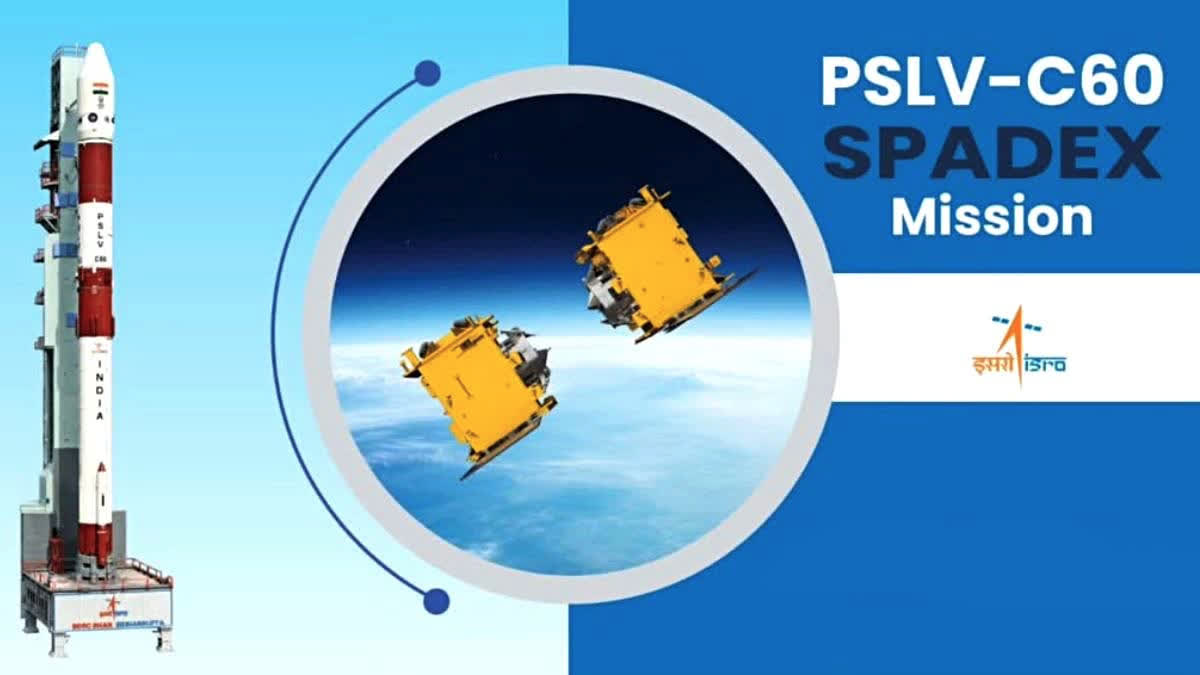Hyderabad: The Indian Space Research Organization (ISRO) via its X post shared that the docking which was to happen on January 7, 2025, has been postponed to January 9, 2025. The delay has occurred due to a problem detected.
SpaDeX (Space Docking Experiment) was launched from Satish Dhawan Space Center in Sriharikota at 10:00:15 pm on 30 December 2024. PSLV-C60 carried two satellites SDX01 (Chaser) and SDX02 (Target) in this mission.
ISRO's Latest Update
ISRO on its X post shared today that it has detected a problem in this mission and investigation regarding the docking process will be required leading to a delay in the docking process.
The SpaDeX Docking scheduled on 7th is now postponed to 9th.
— ISRO (@isro) January 6, 2025
The docking process requires further validation through ground simulations based on an abort scenario identified today.
Stay tuned for updates.
Just after this post, ISRO shared a 13-second video showing the launch of SDX02 (Target) in which the special grip was removed, moving the docking ring forward.
What is Spadex?
The SpaDeX stands for Space Docking Experiment. It is a test in which the process of two satellites identifying each other in low Earth orbit, connecting, transferring goods, and then separating is investigated.
In simple terms, Spadex consists of two satellites. One satellite is called the 'chaser' and the other is called the 'target'. The chaser satellite searches for the target satellite, docks with it, then transfers the cargo and finally separates. This process is important to ensure successful docking and safe transfer of cargo between the satellites in space.
What is docking and undocking?
Docking is the process in which a satellite called a chaser finds and connects with another satellite that is already present in space, called a target. The process is similar to how two train coaches connect with each other. On the other hand, the undocking is opposite to docking. In this process, both the satellites separate from each other. The entire process is automatic and is called autonomous docking.
Importance of docking and undocking
Docking and undocking processes are used to supply resources, refuel, or transfer essential goods to satellites orbiting in space. With the help of these processes, astronauts are able to make their missions successful by staying in space for a long time. For this reason, the successful launch of Spadex is very important for India's future space programs.
Sharing SPADEX onboard video showcasing SDX02 launch restraint release & docking ring extension.
— ISRO (@isro) January 6, 2025
#SPADEX #ISRO pic.twitter.com/bZkpGVyF9s
The main objective of ISRO's Spadex mission is to achieve success in India's future space station, moon mission, and other big space missions. The successful launch of Spadex shows that India can now develop such advanced technology on its own.
Highlights of SpaDeX Mission
SpaDeX consists of two small satellites, SDX01 (chaser) and SDX02 (target), weighing around 220 kg each. These satellites will be placed in a circular orbit at an altitude of 470 kilometres. After this, these satellites will identify, align, and dock with each other using their state-of-the-art sensors and algorithms.
This will be an achievement that only a few countries have achieved so far. Upon completion of this experiment, India will join the list of countries, including America's NASA, Russia, China, and the European Space Agency (ESA), which are capable of autonomous docking.



